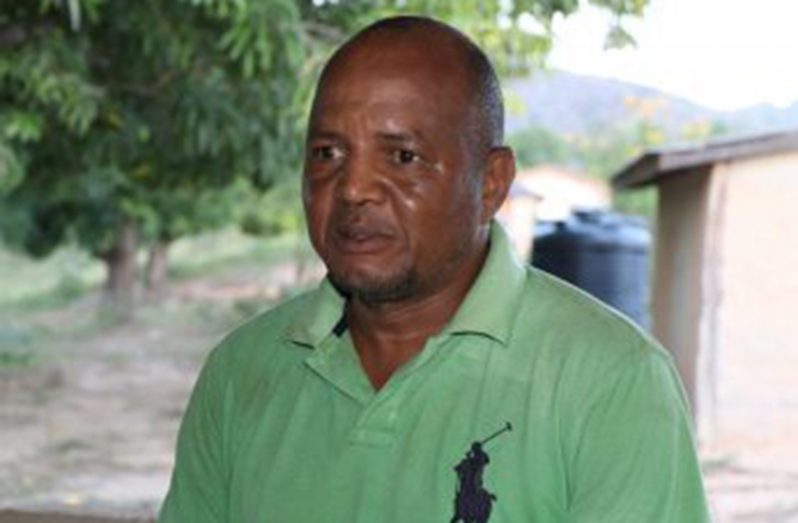– residents reaping the benefits
THE Upper Takutu-Upper Essequibo District (Region Nine) has successfully completed all of its capital projects for 2019 – expending some 99.17 per cent of its budget.
Its Regional Executive Officer (REO) Carl Parker made the disclosure during a recent interview with the Guyana Chronicle, while explaining that the unspent sum accounts for savings realised.
Improved roads, bridges, construction of health and education facilities, and the purchase of much-needed equipment, were among many of the projects executed by the Regional Democratic Council (RDC) during the 2019 fiscal period.
“Our total budget for this year was $534.8M, of which 99.17 per cent was expended. We were able to complete all of our projects and that $500M is in addition to what the other ministries would have spent,” Parker said.
The region has also seen technological improvements with the installation of Wi-Fi in many communities once thought inaccessible, and the developments are being felt by the populace of the region.
“A lot of development has taken place in the region. Notwithstanding our difficulties, people are noticing the development and it’s a talk all over the region. A lot of these villages now have Wi-Fi, and are on social media. Even the so called “remote villages” now have Wi-Fi, and you can read their comments and so on social media, everyone is generally pleased,” Parker told this newspaper.
In the 2019 budget, over $60M was budgeted for transportation to enable regional personnel to travel to far-flung areas to execute and monitor projects and programmes.
Accounting for some 57,750 km², Upper Takutu-Upper Essequibo is Guyana’s largest administrative region.
In addition to the investment in transportation, Parker said, over 150 miles of road have been upgraded and built in the region over the past four years.
“Because of the size of the region, it will take an enormous amount of work. We have completed in excess of 150 miles of road to impact every village. We upgraded the roadways in North, South and Central Rupununi. We did that using the community participation method. We have engaged a lot of people in,” he said.

Notwithstanding the developments, there remains much to do in the region, Parker said.
“What we have been doing since 2015, we have embarked on the improvement of infrastructure in the region. We have embarked on a massive programme of improving our roads, our bridges, so we can get access to those areas. The region is at least 68 per cent better than when we took it over. But we still have a far way to go, but we will get there; so that’s why it’s important that we are allowed to continue to bring relief to all citizens of this region and modernisation,” he told this newspaper.
In the health sector, a number of critical equipment was purchased for a number of health facilities; while a number of health centres and hospitals were either constructed or rehabilitated. Some $59M was budgeted for construction, while $34M was budgeted for medical equipment.
“In the health sector, we were able to construct two maternity waiting homes, one at Annai [and] one at Lethem. We also purchased some equipment for the hospital to improve the system, such as X-Ray machines and such to improve the healthcare in the region,” the REO explained.
In agriculture $26.4M was budgeted for a spray race system at Kurupukari Crossing and black giant birds at Rupertee, Crash Water and Rewa villages, in the fight against foot and mouth disease among cattle.
“We were able to develop some pastures, and create some shade houses, we also did the bridge leading into Yurupukari that was destroyed by fires,” Parker noted.
Towards utilities, $35M was budgeted for the development of water supply systems in the region, while $11M was budgeted for the upgrading of the electrical system at Annai Secondary School Complex.
“The solar electrical system at Sand Creek, and also the dorms in Annai, we did those. We were able to work in collaboration with GWI; we were able to drill deep wells in Aishalton, St Ignatius, Nappi, Aranaputa, and other villages,” Parker shared.
An additional $117M was budgeted for the construction of schools. This included the construction of sanitary blocks at nursery and primary schools at Kumu, Katoonarib, Shiriri, Sowariwau, Apoteri, Maruanau, Awarewaunau and Yakarinta; as well as the construction of a secondary school at Aishalton and living quarters at Annai, among other projects.
“We were able to complete the primary school extension at Paipang. We were able to construct the nursery school in Baishaidrun in South Rupununi, we also did a nursery school at Achiwib” Parker further pointed out.




.png)









